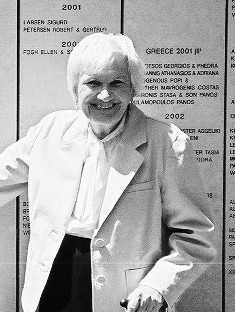Holocaust Education & Archive Research Team |
|
Survivor Stories
Holocaust Survivors Chelmno Survivors Righteous Gentiles Holocaust Recalled
| |||||||
Karl Plagge An Unlikely Hero
Prior to the Nazis coming to power, engineer Karl Plagge had joined the National Socialist Part because, as he said, he believed in Hitler’s social promises and economic prosperity. Born on July 10, 1897, in Darmstadt, Germany Plagge graduated from the Technical University of Darmstadt in 1924 with a degree in engineering. Upon being drafted into the Wehrmacht at the beginning of World War II, he was put in command of an engineering unit, HKP562, whose duties involved repairing military vehicles damaged on the eastern front. Plagge and his unit arrived in Vilnius (Vilna) in July 1941 and soon witnessed the genocide being carried out against the Jews of the area. Plagge, as a German, felt responsible for some of the horrors he witnessed and felt compelled to work against the genocidal machine. He decided to do what he could to help some of Vilnius’s beleaguered Jews. No one will ever know exactly how many Jewish lives Plagge saved or how many (indirectly) he was able to protect, probably several hundred. Over the years he took as many prisoners as he could to work for him. Witnesses attest that he freed many prisoners from the SS this way. Executions in Vilnius and environs occurred primarily at the Ponary mass-execution site, where 110,000 people where murdered. About 70,000 of these people were Jews of Lithuanian and other nationality; yet others were deported to Nazi extermination camps. Plagge attempted to spare as many as he could from this fate by purposely recruiting Jews instead of Poles for labor.
His success, however, was only partial: His unit had to retreat, thereby removing the slave-labor framework that had protected them until that point. The SS ultimately succeeded in murdering approximately 900-1000 of Plagge’s 1250 slave-laborers between the Kinder-Aktion and the final liquidation of the camp.
“No, we should go forward, groping our way through the darkness, stumbling perhaps at times, and try to do what good lay in our power. As for the rest, we must hold fast, trusting in the divine goodness, even as to the deaths of little children, and not seeking personal respite" [Excerpt from The Plague by Albert Camus] In September 1943 it became apparent to Plagge that the Vilna Ghetto was soon to be liquidated: all the remaining Jews in the ghetto were to be taken by the SS, regardless of any working papers they had. During this crucial period Plagge made extraordinary bureaucratic efforts to form a free standing HKP 562 Slave Labor Camp on Subocz Street on the outskirts of Vilnius. Alfred Stumpff, First Lieutenant under Plagge in the HKP said: “Mr. Plagge had taken a large number of Jews for jobs that were neither useful nor necessary. There were, for example, Jews as hairdressers, shoemaker, tailor, kitchen personnel, Jewish women and girls to work in the garden, even a Jewish doctor to oversee the health condition of civilian workers. From the outside looking in these skilled workers were able to be camouflaged as motor-vehicle workers. He did this by giving work certificates to Jewish men, certifying them as essential and skilled workers regardless of their actual backgrounds. This kind of work permit protected the worker, his wife and two of his children from the SS sweeps carried out in the Vilna Ghetto in which Jews without work papers were captured and killed at Ponary." The severe conditions in HKP camp were relatively benign, compared to appalling conditions in the Ghetto, with tolerable work conditions, and food at sustenance levels. Plagge ordered respectful treatment of the slave laborers, which resulted in reduced abuse by the men of his unit and the Lithuanian police who guarded the camp. In spite of the general benevolence of Plagge and some of his men, the SS controlled the ultimate fate of the HKP laborers. The SS entered the camp on two occasions to commit atrocities, before finally liquidating most of the Jewish laborers in July 1944, shortly before the German retreat out of Vilnius. In November 1943, a Jewish prisoner named David Zalkind, his wife, and child attempted to escape from the camp and were captured by the Gestapo. They were publicly executed in the camp courtyard in front of the other prisoners. A letter from Plagge to SS Ghetto administrators justifying his need for Jewish women and children to remain at the Subocz St. camp:
On March 27, 1944, during Plagge's home leave absence, the SS carried out what they called a “Kinder Aktion” (a "Children Operation") — they entered the camp and rounded up the vast majority of the camp’s 250 children and then transported them away from the camp to be killed at Ponary. Both Plagge, his subordinates and the prisoners understood that ultimately the fate of the camp’s Jews was to be decided by the SS. Survivor Pearl Good, made the following statement about Plagge's actions: "My Father had worked in the HKP workshop even before we were put into the ghetto and his Facharbeiter Schein had saved him from the “Khapuny –the grabbers. Survivors Mark and Anna Balber made the following statement about Plagge:
"During the Nazi occupation of Vilno (now Vilnius) we, along with about 1200 other Jews, were prisoners in a forced labor camp known as H.K.P.. We were under the control of both, the Wehrmacht and the SS. Major Plage was in charge of the Wehrmacht detachment.
We all knew that Major Plage would intercede with the SS and do anything he could to help us and to alleviate our suffering. Of the many situations that arose, several stand out in our minds:
One morning, when we stood for our daily count, the SS commander, Kitel, singled out young and pretty girls and took them away. One of our (Jewish) leaders, N. Kolish, appealed to Major Plage. The girls were released the same day.
On another occasion, after we were in the camp about six months, an SS officer by the name of Weiss took away all the small children. They were taken to a place called Ponary and all killed. We later found out that this only happened because Major Plagge was on leave in Germany, and was not there to object."
Excerpt from a letter written by Karl Plagge to his wife Anke on 6/21/1944 :
Just before the German retreat, on July 1, 1944, Major Plagge made an informal speech inside the camp. In the presence of an SS officer, he told the prisoners that he and his men were being relocated to the west, and he was unable to get permission to take his workers with his unit. The prisoners were told that they would be relocated on July 3 by the SS.
With this covert warning, over half the camp's prisoners went into hiding before the SS death squads arrived on July 3, 1944. The 500 prisoners who did appear at roll call were taken to Ponary and shot. Over the next three days the SS searched the camp and its surroundings and succeeded in finding half the missing prisoners; these 250 Jews were shot in the camp courtyard.
However, when the Red Army captured Vilnius a few days later, some 250 of the camp's Jews emerged from hiding. This group represents the largest single group of Jewish survivors of the Holocaust in Vilnius.
At his own request he was classified as a follower/collaborator, even though the court had wanted to award him the status of an exonerated person. Like Oskar Schindler he blamed himself for not having done enough. After the trial Plagge lived out the final years of his life quietly and without fanfare before dying in Darmstadt in June 1957. For more than fifty years Jewish survivors from Vilna had been searching for Major Plagge, to thank him and to try to understand how he came to stand as a startling light of moral courage in the midst of utter darkness. After 1945, the approximately 250 Holocaust survivors of the HKP Slave Labor Camp were scattered over the globe, working to begin life anew.
But over the decades and generations that followed the war, from DP camps in Germany and from new homes in the United States, Canada, Israel, France, Lithuania and Russia, they tried to find him. They told their children stories of survival and that they owed their lives to the actions of Major Plagge. For many years the identity and motivations of this unusual officer remained obscured by the mists of time and distance.
In 2005 he was bestowed the “Righteous Among the Nations” title by the Yad Vashem Holocaust Memorial.
Sources:
Good, Dr. Michael: The Search For Major Plagge: The Nazi Who Saved Jews. Fordham University Press, 2005. ISBN 0-8232-2440-6 Žydų darbo stovykla HKP: 1943–1944: dokumentai. The Vilna Gaon State Jewish Museum Guzenberg, Irina 2002 Yad Vashem Archives Darmstadt Records Archive
Copyright. Carmelo Lisciotto H.E.A.R.T 2010
|
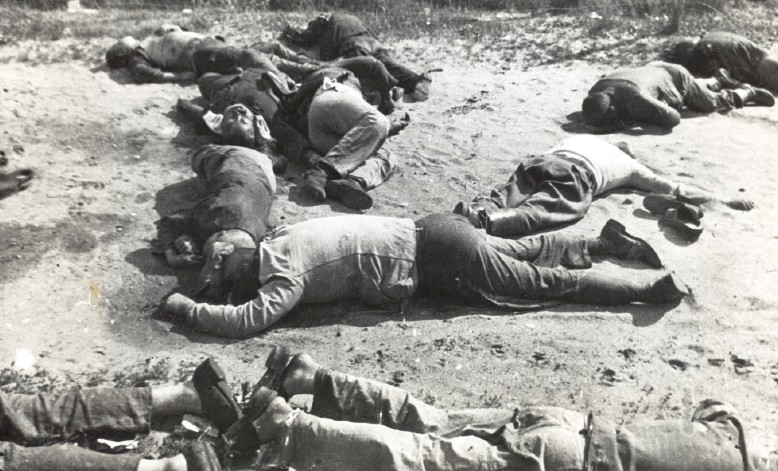

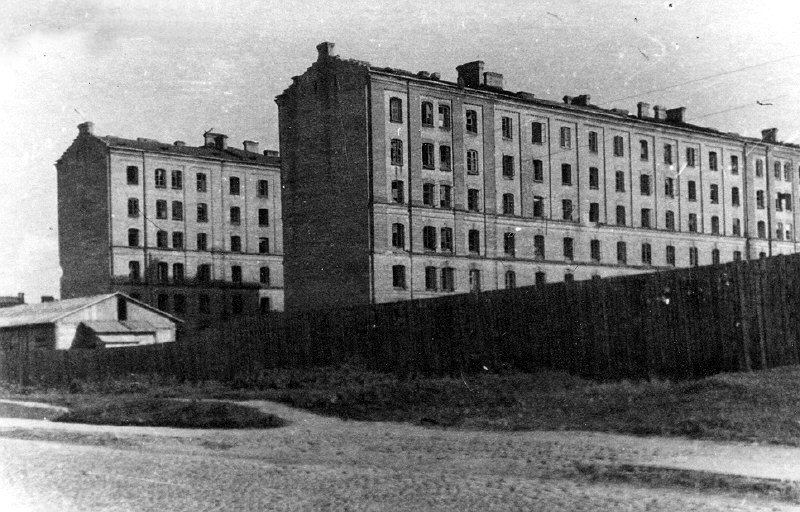
%20ghetto..jpg)
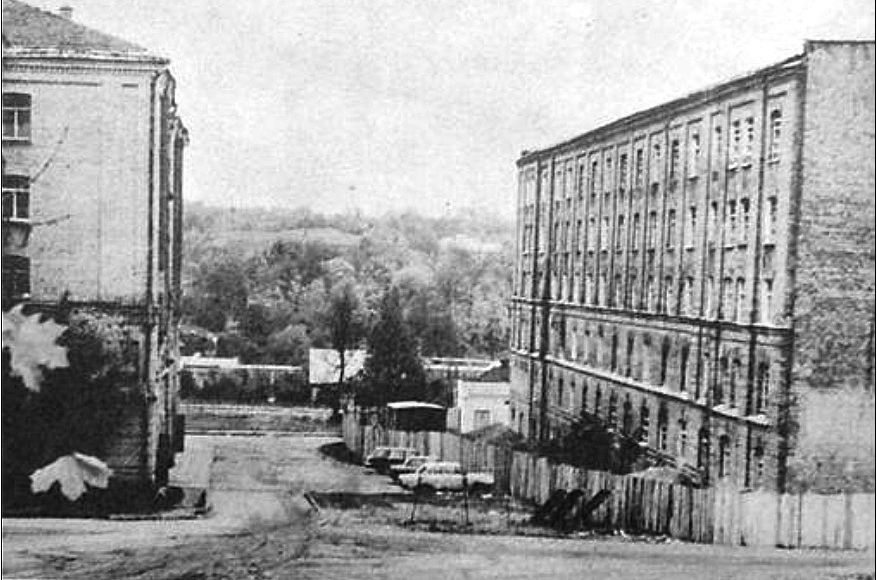

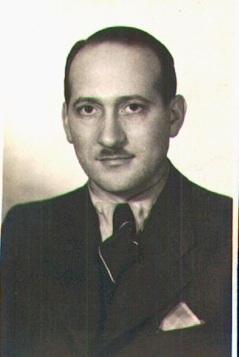
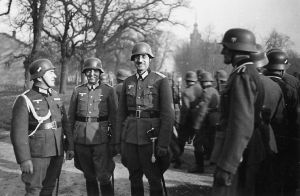

%20beside%20buildings%20that%20had%20housed%20the%20HKP%20forced%20labor%20camp.jpg)
